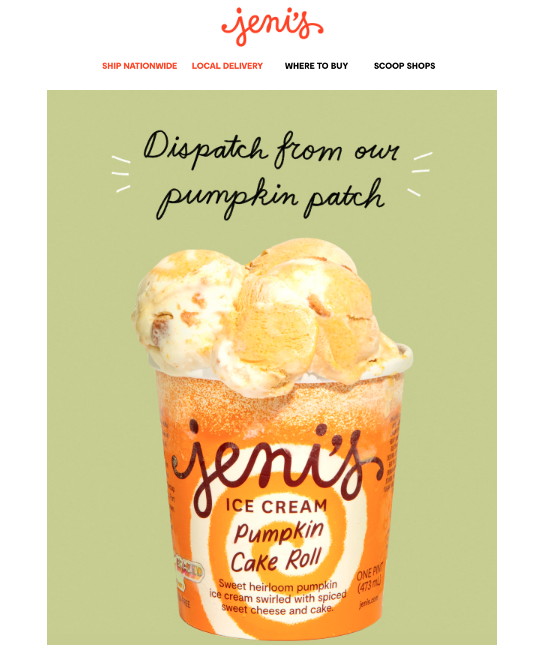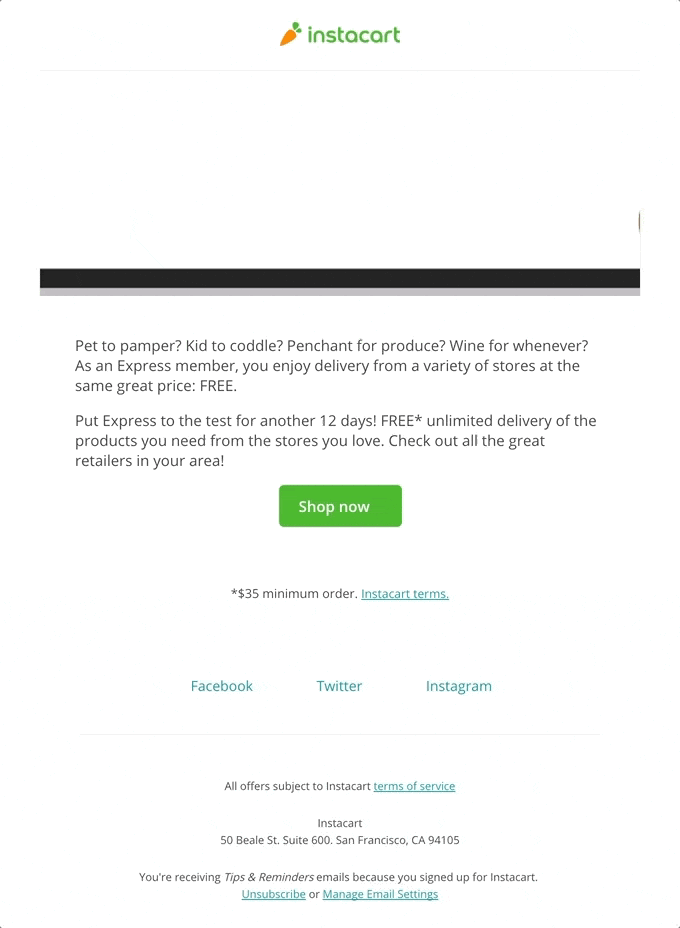9 Strategies to Increase Email Engagement
Time to read: 8 minutes
The email inbox is a competitive place where only the strongest emails survive. Getting to the inbox is the first task, but then you have to boost email engagement by enticing your subscribers to take action.
Average open rates of marketing emails across industries come in at 21.33%, meaning recipients delete most marketing messages without opening them. And some emails don’t even make it to the inbox (but that’s a deliverability issue for another post).
Don’t get us wrong—email continues to be the number one way for businesses to engage with customers. But with the high volume of emails that businesses send, it’s more important than ever to try different email strategies that’ll help drive engagement with recipients.
This post will cover the top email marketing strategies to compete in the inbox and increase engagement rates, from writing captivating subject lines to sending personalized content.
But first, how do you measure email engagement?
What is marketing engagement?
Marketing engagement refers to the ways in which a brand interacts with its audience across various platforms and channels. It encompasses all your efforts to create meaningful interactions with potential and current customers.
Engagement can be measured through various metrics, such as likes, shares, comments, time spent on page, email open rates, click-through rates, and direct responses or inquiries.
Here are some aspects of marketing engagement to consider:
Value: Whether it’s through blog posts, social media, email newsletters, or videos, offering content that is informative, entertaining, or helpful is fundamental to engaging your audience.
Interactivity: Engagement is boosted when customers can interact with the content or the brand. This could be through social media comments, online polls, interactive videos, or any medium that encourages active participation rather than passive consumption.
Personalization: Tailoring messages and content to meet the interests and needs of your audience.
Consistency: Regular and consistent communication helps keep your brand top-of-mind for your audience. This doesn't mean bombarding them with messages but rather maintaining a steady cadence.
Listening: Engagement is a two-way street. Pay attention to customer feedback, respond to comments, and engage in conversations to show that your brand values its audience.
Community: Encouraring your audience to interact with each other, share their experiences, and be part of a community centered around your brand.
What is email engagement?
Before we dive into how to increase email engagement, let’s get on the same page about what this means. Email engagement refers to how your recipients interact with your email marketing campaigns.
There’s no single metric that determines email engagement rates—instead, you use various metrics that, put together, give you an idea of the percentage of your truly engaged recipients. These metrics include:
- Open rate: The percentage of recipients who click on a marketing message in their inbox
- Click-through rate (CTR): The percentage of clicks on links within your email based on all your successfully delivered emails
- Conversion rate: The total percentage of recipients who take the desired action, like a purchase
- Unsubscribe rate: The percentage of recipients who unsubscribe from your communications (signaling that they don’t find your emails relevant or engaging)
Now that we’re clear on what it means, let’s explore 9 ways to improve email engagement.
9 email strategies to improve email engagement
1. Write irresistible subject lines
When you sift through an inbox flooded with personal, professional, and promotional emails, what makes you stop and click? Most often, it’s the subject line.
The subject line is your opportunity to make a good first impression on recipients and help your email stand out in a crowded inbox. When it’s well-crafted, the subject line can lead to higher open rates.
So what makes a good subject line? The best ones are short, clear, and give just enough information to leave your reader wanting more. Our full guide on subject lines dives into the best practices, but here are the Cliffs Notes:
- Keep it short: Subject lines under 5 words tend to perform best, with 3-letter subject lines getting the highest engagement.
- Create a sense of urgency: Subject lines that inspire a sense of urgency or scarcity can urge your subscribers to click (or act) fast on your emails. There’s a fine line between urgent and spammy, however, so limit these subject lines for when the offer actually requires immediate action.
- Use numbers: Subject lines with numbers can add a sense of specificity that entices readers to open your emails. The number can refer to a discount, savings, or an interesting statistic explained in your newsletter.
- Avoid all caps and excessive exclamation points: Subject lines using all caps and a ton of exclamation points can make your subject line look spammy (both to recipients and inbox providers) on top of making your recipients feel like you’re yelling at them.
- Make it personal: Subject lines are more memorable to recipients and increase the chances that they’ll open the email when you personalize them. Start by using the recipient’s name in the subject line, so they’ll know the email contains a deal or promotion just for them.
- Have fun: Subject lines using humor (when appropriate) can stand out in a sea of boring emails. The occasional pop culture reference, pun, joke, or play on words can be a great way to charm recipients.
2. Optimize the preview text
This short blurb can be easy to overlook, but when used strategically, the preview text is another opportunity to give recipients a taste of the email contents. Use this element to tell readers what deals or information they’ll find inside. And even if they only scan the text, it can nudge them toward opening the email instead of moving on to the next.

3. Create a polished, mobile-friendly email design
When it comes to email, what you say is equally as important as how you say it. If the information in your email is difficult to consume, chances are your subscribers will stop engaging with your message.
Simple, eye-catching email design is crucial for customer engagement and will encourage subscribers to read through your entire email. By keeping the text short and scannable (like Clear does in the example below) and ensuring the template is optimized for mobile, you’ll ensure it’s easy to read on any device or screen size. After all, recipients open more than half of emails on mobile devices.
Want a head start on your email design? Check out our free email templates.

4. Tell the story with graphics
Most recipients don’t have the time to sift through a text-heavy email, especially when a picture could do a better job of conveying the message. So don’t just rely on email copy—include eye-catching images to make your content more engaging.
For example, while this email from Jeni’s goes on to tell the story behind the pumpkin cake roll ice cream for those who want to read it, the hero image is enough to entice readers to try this new flavor.

5. Include interactive elements
Interactive elements such as videos, GIFs, games, polls, and quizzes can complement your email design and keep readers engaged for longer. Not only do these elements entertain your audience, but these can also increase CTR and drive conversions.
Try including interactive elements, like the animated GIF in this Instacart email, to see how these impact engagement with your audience.

6. Make the CTA prominent
The call to action (CTA) is one of the most important elements to help you achieve your email marketing goals, including increasing engagement. Follow these CTA best practices to increase your chances of clicks and conversions:
- Use a compelling, specific verb to create a powerful CTA.
- Place the CTA strategically on the top half of the page, so it’s one of the first things recipients see when they open the email.
- Employ contrasting colors and a larger font size than the rest of the copy to ensure the CTA button stands out.
- Ensure the CTA leads to the right landing page, where the visitor can complete the desired action.
In the example below, The Real Real places the CTA button front and center, so readers can go straight to the website to shop as soon as they read “90% off.”

7. Segment your email list
Now that you’ve crafted an enticing subject line and designed a creative, interactive email, it’s time to press Send. But who should be on the recipient list?
Remember, your recipients are more likely to engage with emails tailored to their interests and current stage in the customer journey. So instead of sending mass emails to your entire subscriber list, you should segment your target audiences to ensure you send them relevant content.
The categories you can use to segment recipients include:
- Demographic data (e.g., location, age range, gender, and industry)
- Type of customer (e.g., new customer, frequent customer, and free trial subscriber)
- Level of engagement (e.g., engaged users and inactive users)
- Purchase or activity history (e.g., last purchase, recently viewed items/services on your website, etc.)
Email service providers, like Twilio SendGrid, provide email metrics and engagement analytics that can help you determine how to segment your email lists to send more personalized emails, which we’ll discuss next.
8. Personalize the content
We already discussed addressing the customer by name in the subject line, but that’s just the beginning of email personalization. Using first-party customer data to send more targeted emails will also help increase engagement.
For example, using dynamic content in your marketing emails to promote products based on the customer’s previous purchases or browsing history (along with a discount code for good measure) will increase the chances that they’ll convert.
Not to mention, segmentation and personalization go hand in hand, as your audience segments will help ensure you send the right message and facilitate automation. For example, when you add new subscribers to your new customer segment, you can automatically send them your welcome email series, which aligns with their stage in the customer journey.
And don’t forget about transactional emails! These are the most personalized emails you’ll send, as these directly tie to the recipient’s actions. Learn more about the most important elements to include in transactional emails.
9. Perform A/B testing
There’s no silver bullet for email marketing—it’s all about trial and error. And A/B testing different elements of your campaigns will help you determine what drives engagement.
Some of the elements you can A/B test include subject line length, emojis, preview text copy, sender name, CTA placement and copy, and message length. Additionally, you can test the day of the week and time of day when you send your emails. Learn how in our guide to A/B testing.
Improve marketing engagement with Twilio SendGrid
Now that you know how to craft irresistible subject lines, design engaging email content, and segment your email lists, you’re well on your way to increasing customer email engagement.
But these strategies are easier said than done when you don’t have the right tools to implement them. Twilio SendGrid is here to help. With our email marketing templates, drag-and-drop and HTML editors, automation, and list management capabilities, Marketing Campaigns equips you with the necessary tools to make your emails more engaging.
Give SendGrid a try for free today and start implementing these strategies to drive engagement.
Related Posts
Related Resources
Twilio Docs
From APIs to SDKs to sample apps
API reference documentation, SDKs, helper libraries, quickstarts, and tutorials for your language and platform.
Resource Center
The latest ebooks, industry reports, and webinars
Learn from customer engagement experts to improve your own communication.
Ahoy
Twilio's developer community hub
Best practices, code samples, and inspiration to build communications and digital engagement experiences.


